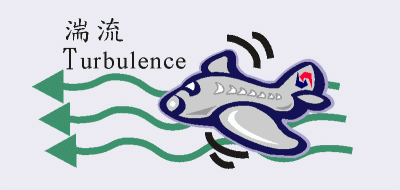Air turbulence flying
by Magdalena
(Krakow, Poland)
I have been researching the net to find some information but I didn't managed so I decided to write to you. Once I've read in the newspaper about something really interesting for me. It was an interview in which a guy described his flight from Europe to the US. There were really serious turbulences during the flight. As he said, it was the time of the year when the weather changes every year and the turbulences over the Pacific Ocean are really serious.
Cabin Crew (as he said) confirmed that information. And that's why I decided to ask you - is there really such a period in the year when flying over the Pacific Ocean
may be really annoying? If yes, when does it occur?
I would be very grateful for the reply.
With kind regards,
Magdalena S
Barry's Response - Magda:
Turbulence is invisible air movement. Due to atmospheric pressure, jet streams, mountain waves, cold or warm fronts, or thunderstorms. Passengers and crew may feel choppy during flights.
Turbulence is usually caused by:
1) Thermals - Heat from the sun makes warm air rise and cold air sink.
2) Jet streams - High-altitude air currents that change direction quickly, disturbing the nearby air where planes fly.
3) As air passes over mountains, it causes turbulence as it flows above the air on the other side. Over the Pacific, it won't be like that.
4) Plane wake turbulence - from the plane itself.
5) Microbursts - from storms.
As jets usually fly over 30,000 feet, they're likely to be affected most by the jet stream over the ocean. Now in the autumn (October to December over the north Pacific) the jet stream sweeps southward, often covering a lot of airspace in one day. An upper cold front moves air in many directions, including vertically. Passing planes jar up and down because of this.
It's called wind shear, and it's something aviation weather stations need to measure. Here are some other parameters.
What about consistencies
If you're flying over the Pacific Ocean, you can get turbulence at any time of year. Weather conditions such as strong winds, thunderstorms, or atmospheric disturbances can cause turbulence, and it can happen anywhere at any time.
There are some regions in the Pacific Ocean that are more prone to turbulence than others. Areas around the equator, like the Intertropical Convergence Zone (ITCZ), have a higher incidence of turbulence because warm and cool air masses are convergent.
During certain times of the year, such as winter in the Northern Hemisphere, the jet stream can become more active and shift to lower latitudes, causing more turbulence over the Pacific. Pilots rely on weather forecasts and real-time information to avoid turbulence and ensure a safe flight.
This won't happen to every flight, but significantly more than at other times of the year. It's usually harmless, but annoying, as you say.
Good Luck
Goin' Somewhere? - Be sure to get to the airport in plenty of time for your flight. Always wear your seatbelt and follow the flight attendants' instructions. Have a great trip and enjoy the journey!
Magda's Response - Thanks a lot for your reply!
Search this site for more information now.
Comments for Air turbulence flying
|
||
|
||
|
||
|
||
|
||
|
||
|
||
|
||
|
Click here to add your own comments Join in and write your own page! It's easy to do. How? Simply click here to return to Cold, eh?. |
Do you have concerns about air pollution in your area??
Perhaps modelling air pollution will provide the answers to your question.
That is what I do on a full-time basis. Find out if it is necessary for your project.
Have your Say...
on the StuffintheAir facebook page
Other topics listed in these guides:
The Stuff-in-the-Air Site Map
And,
Thank you to my research and writing assistants, ChatGPT and WordTune, as well as Wombo and others for the images.
OpenAI's large-scale language generation model (and others provided by Google and Meta), helped generate this text. As soon as draft language is generated, the author reviews, edits, and revises it to their own liking and is responsible for the content.




